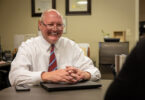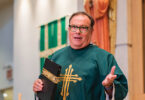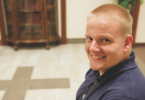
by Michael Podrebarac
The present pandemic, like all pandemics, will eventually end. It may leave certain lasting marks upon our lives, and even the disease may in some form prevail.
But, whether through “herd immunity” or a vaccine or even what may only be described as a miracle, this period of extraordinary suffering will, in time, draw to a close. We will remember in tearful charity those whose lives were ended by COVID-19 when that day comes.
And then, as many folks of good will have been apt to say these past six months, “Things will finally get back to normal, or at least a ‘new’ normal.” Indeed.
Our congregations have been held back by the pandemic, especially our liturgical prayer together. Nothing could have struck a worse blow to the church during this time: the curtailment of our corporate, divine worship.
For, in the words of the Second Vatican Council: “The liturgy is the summit toward which the activity of the church is directed; at the same time, it is the font from which all her power flows.”
As the people of God, everything we are, and everything we aspire to, has its origin and goal in our sacramental prayer.
We have lost this unequaled and privileged encounter with the living God when we have been unable to attend Mass together.
But of course, this inability shall pass, and we will find ourselves once again able to return to divine worship absent most — if not all — of the encumbrances we currently experience.
Do we really know what we’ve lost these past six months? Do we really understand what we should be looking forward to once the restrictions have ended?
I have been assigned, like the other regular guest columnists for The Leaven, four columns for this year’s volume. In reality, I’m actually going to write one complete column in four installments, similar to last year when I reflected upon the need for beauty in the sacred liturgy.
This year, I would like to reflect on our focus at Mass. What do we tend to focus on when we come together for Mass? What does the church consider our authentic focus to be? And, when there is a difference between the two, how might we learn to bridge the gap?
Let’s start with a simple proposition for this year: That, in reality, there are four principal reasons why we celebrate Mass — four “ends” to our divine worship.
Whatever other pleasures or benefits we may derive from our liturgical participation, they are subordinate to these four ends: adoration, atonement, thanksgiving and petition.
There were once these same four types of sacrifices offered in the Old Testament. The sacrifice of Our Lord on the cross —presented to us during the divine liturgy —gathers these four into one, supreme sacrifice offered to God.
Is this the reality you and I left behind on March 15 when our churches first closed? Is this the reality you and I hunger to return to when things go “normal” again?






